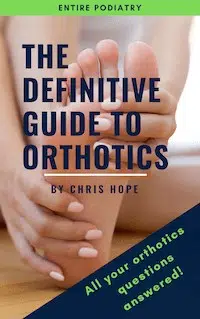Metatarsalgia is a broad term that refers to pain and inflammation in the ball of the foot. Pain is usually a dull ache, much like a bruise, and can be worse when walking in bare feet particularly on hard floors such as concrete or tiles. The pain may be relieved when wearing good running shoes with forefoot cushioning.
People will metatarsalgia may find that they tend to walk on the outside of the foot in an effort to avoid stepping on the ball of the foot due to pain. Sometimes a callus will form in the area of increased pressure and pain.
What causes metatarsalgia?
Metatarsalgia is most often caused by excess pressure on the ball of the foot. This can be related to biomechanical problems such as high-arched feet, bunions, or hammer toes.
Onset can be gradual, or sudden if there is trauma to the area or if new shoes are involved. Sudden trauma might include landing hard on the ball of the foot while barefoot, wearing non-cushioned shoes, or stepping on a stone while running.
A key part of the clinical examination is to determine cause of pressure on the foot in order to provide effective treatment.
How is metatarsalgia treated?
Metatarsalgia usually responds very quickly to proper treatment. It can almost always be treated conservatively and surgery is rarely necessary.
The goal of treatment is to reduce pressure on the painful area of the foot. This can include:
- Modifications such as a metatarsal pad, arch support or forefoot cushioning
- Footwear advice
- Custom orthotics
- At times, ice and anti-inflammatory medication is recommended to help reduce inflammation





